Chinese Lion Dance: Origins, Styles and Etiquettes
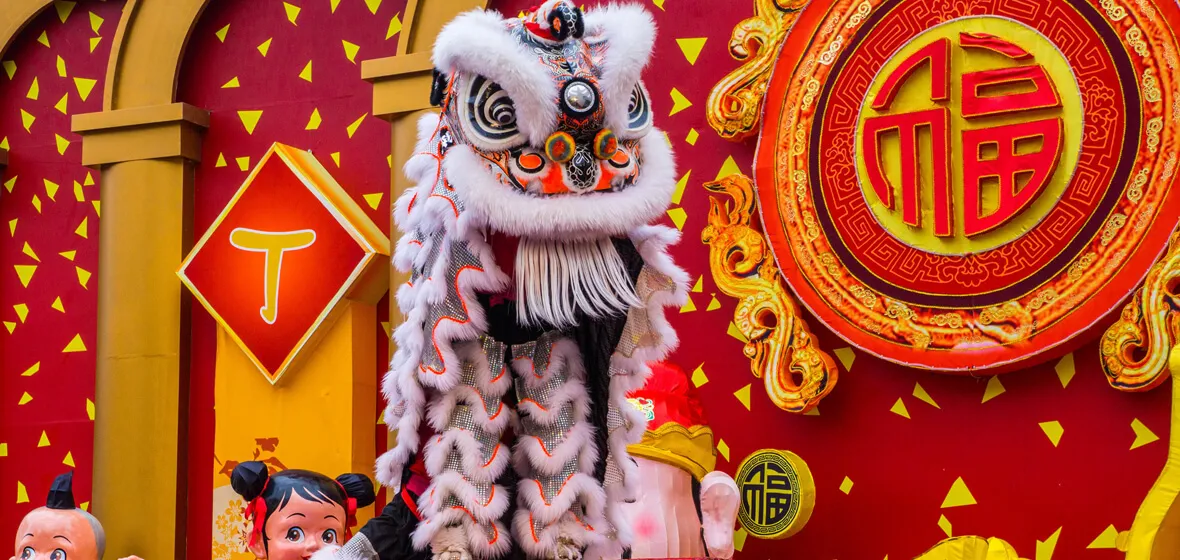
The Lion Dance is a traditional performance in Chinese culture that has been around for ages. Today, you can spot it at important celebrations and special events.
The performers dress in a colorful lion suit, with a vibrant lion head and a long, colorful lion body. The lion is operated by two or more dancers who mimic the movements of a lion while inside the suit. They move together to create the illusion of a lion jumping, prancing, and even interacting with the audience.
The Lion Dance is accompanied by loud drums, cymbals, and other instruments to get everyone excited. People believe that the lion will bring good luck, fortune, and keep bad spirits away. Performers often visit businesses, residences, and public places to perform the Lion Dance, and people will give the lion a red envelope with money for good luck.
The Lion Dance has become not only a cultural symbol but also a popular and fun show . People of all ages enjoy the Lion Dance for its artistry, agility, and teamwork of the performers.
The Origins of Chinese Lion Dance
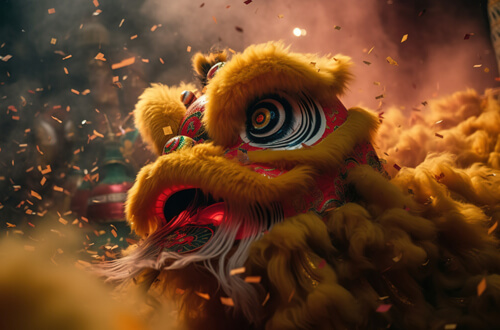
The Lion Dance is native to China. There's a story that goes back to the time of Emperor Zhang during the Eastern Han Dynasty (25CE-220CE). The Da Yuezhi Kingdom, way over in central Asia, gave a "Golden-haired Lion" to the Han Dynasty as a gift. They said that if anyone in the Han Dynasty could tame the lion, they'd keep sending gifts. If not, they'd break off ties. After the envoy departed, Emperor Zhang picked three brave men to try to tame the lion, but none of them could. Then, when the lion got really upset, the palace workers clubbed it to death. To keep from getting in trouble, they took off the lion's skin and dressed up as a lion themselves, with one person enticing the other to dance. This ruse had fooled the envoy and deceived Emperor Zhang . The incident became well-known in the Han Palace, and the people believed that the lion dance can bring glory to the country and represent the avoidance of punishment and the pursuit of good fortune. So people replicated the lion heads and skins, leading to the popularity of lion dances from that point onward.
As time passed by, the Lion Dance became more important in Chinese festivals and some important celebrations . Today, people operate the Lion Dance with loud drums and clashing cymbals to help chase away bad spirits and bring in good luck, fortune, and blessings for the year ahead.
The Northern Lion Dance VS. Southern Lion Dance
The Northern Lion Dance and Southern Lion Dance are two different styles of lion dance that come from different regions of China. Although both forms have many similarities, there are many differences in appearance, movements, and cultural significance.
Appearance
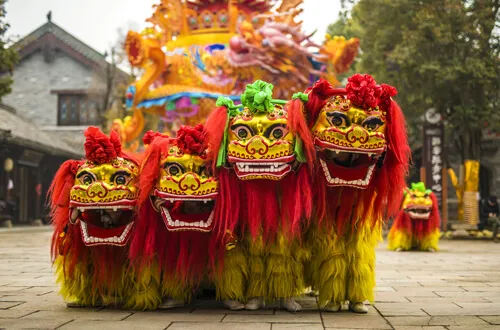
Northern Lion Dance: People in northern areas like to design the lions in big size with colorful cloth and flowing mane. Plus, the lion’s heads have really big eyes and a horn-like thing right on the forehead.
Southern Lion Dance: People in southern areas like to design the lions in small size with simple cloth and short mane. The lion’s appearance in southern regions is more modest, with a small and round head. Southern Lions may feature various colors but are often more subdued in their decorations.
Movements
Northern Lion Dance: People in north are strong in the Lion Dance. They can do some powerful and impressive actions. You can see the lion dancers doing lots of acrobatics like jumps, flips, and tricky steps. It takes a lot of muscle and coordination to pull off these moves.
Southern Lion Dance: People in south are more like the smooth operators. They're all about fluid and dramatic moves, with quick feet, detailed hand signs, and moves that all match up perfectly. Southern Lions dance in a way that's really graceful and full of feeling, like a lion playing and having fun.
Cultural Significance
Northern Lion Dance: The Northern Lion Dance is closely associated with martial arts and northern Chinese folklore. You can spot it at some festive occasions, such as the Chinese New Year, to keep evil spirits away and bring good luck and prosperity.
Southern Lion Dance: The Southern Lion Dance is deeply rooted in southern Chinese culture. You can spot it at some important celebrations and rituals, including temple festivities and weddings. It is believed to bring blessings, and it holds significance in local folklore and traditions.
These are the usual differences, but there's actually a lot of variety within each style because of different local customs and beliefs. Both types of the Lion Dance are important in Chinese culture and are loved for their artistic beauty.
Lion Dance Etiquettes: Do's and Don'ts
Lion Dance is a traditional cultural practice with its own set of etiquette. Here are some do's and don'ts to follow when it comes to Lion Dance:
Do's:
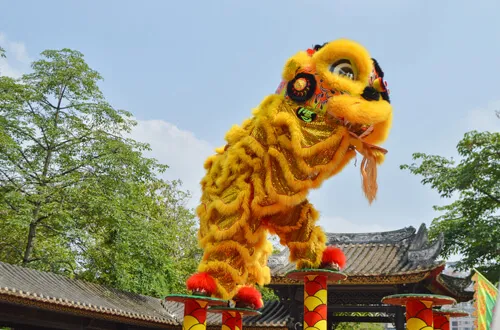
Respect the performers: You need to respect the lion dancers. You can clap your hands to show your appreciation of their skills and efforts.
Follow instructions: You need to pay attention to the instructions given by the Lion Dance’s organizers or the lion dance troupe. They may provide guidance on when to approach the lion or how to interact with the performers.
Offer red packets: You can give red envelopes (also known as "hongbao") containing money to the lion dancers. It may bring good luck and prosperity to you.
Be cautious with firecrackers: Usually, people operating the Lion Dance performance will set off firecrackers for adding festive air. You need to maintain a safe distance and follow any safety instructions provided by the organizers.
Don'ts:
Touch the lion's head: You can’t touch the dancing lion unless you are specifically directed by the performers or event organizers, it is generally advised not to touch or pull the lion's head or any part of the lion's costume. This is to maintain the sanctity and integrity of the performance.
Create obstacles: You can’t block the lion dancers or get in their way. It's important to allow them all the space they can get to do actions without any obstacles. You also can’t interrupt the performers. They need to focus on doing the actions successfully.
Disrespect the tradition: You can’t make any disrespectful or disruptive gestures, comments, or behaviors during the Lion Dance performance. Show your respect for traditional customs.
By following these do's and don'ts, you can show proper respect for the lion dance tradition and contribute to a harmonious and help make sure everyone has a good time.
OR
Are you eager to begin your Chinese cultural journey?
Drop us a line and we will promptly connect you with our leading China expert!
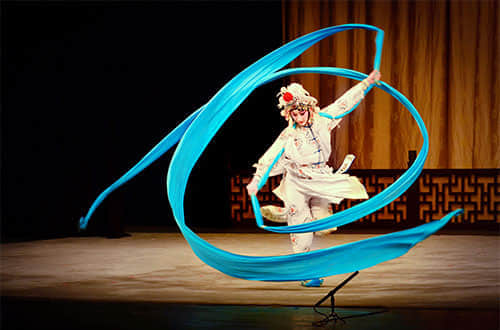 Chinese Operas
Chinese Operas 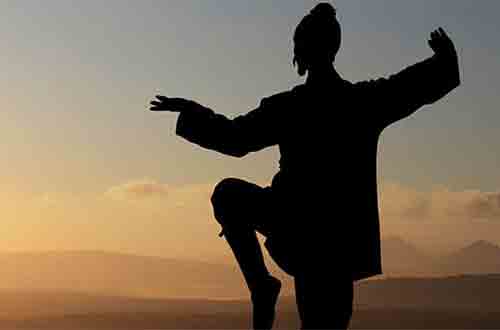 Chinese Kung Fu
Chinese Kung Fu 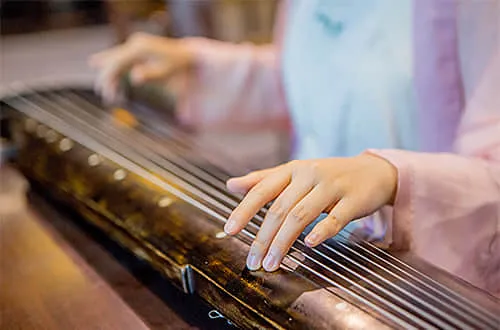 Chinese Music
Chinese Music 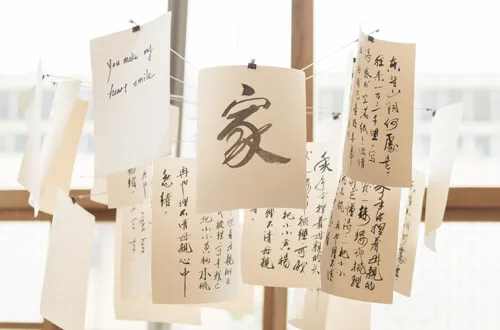 Chinese Calligraphy
Chinese Calligraphy